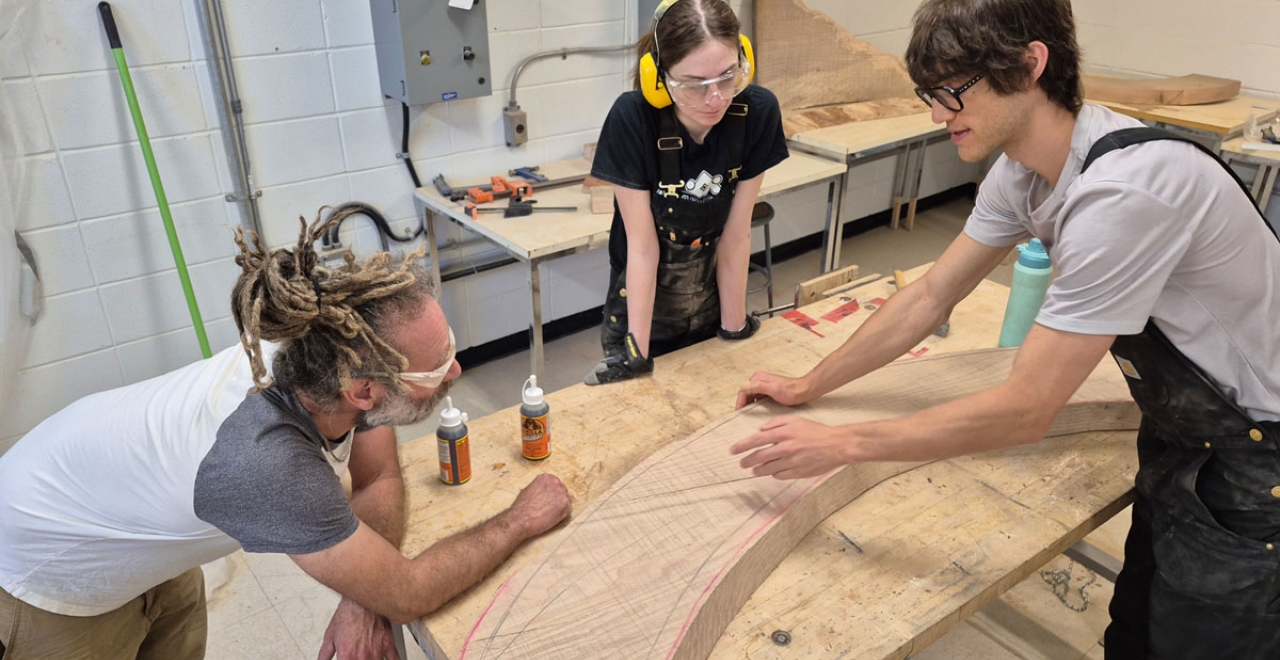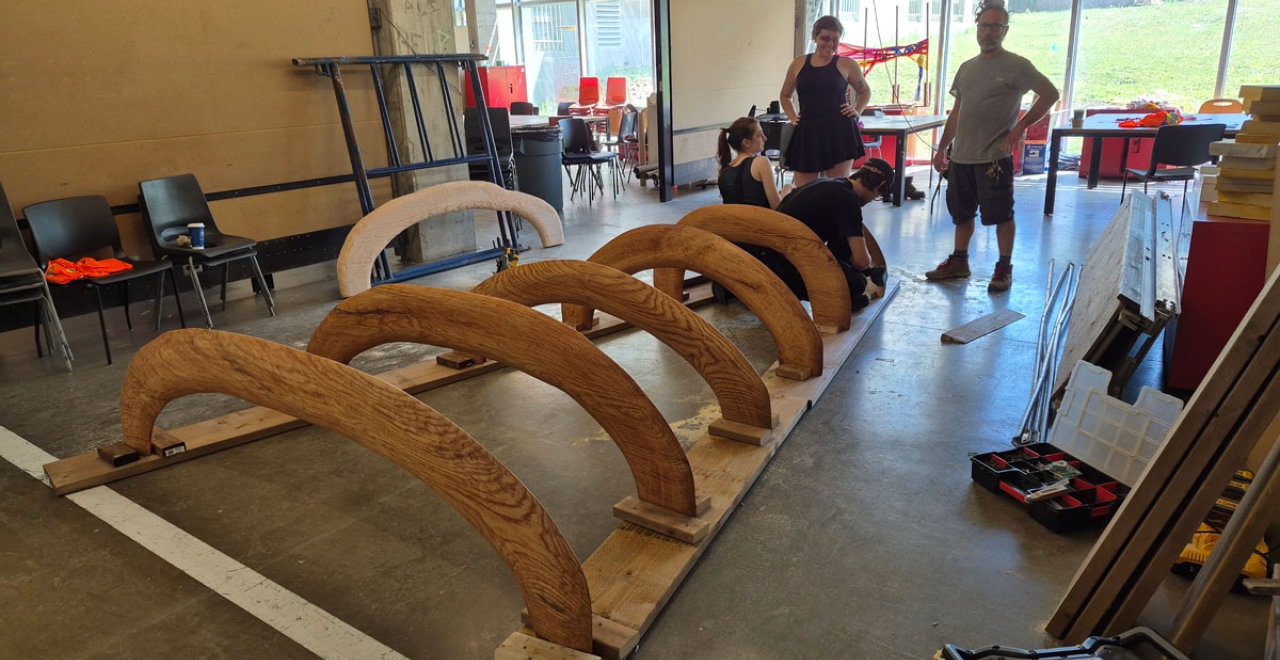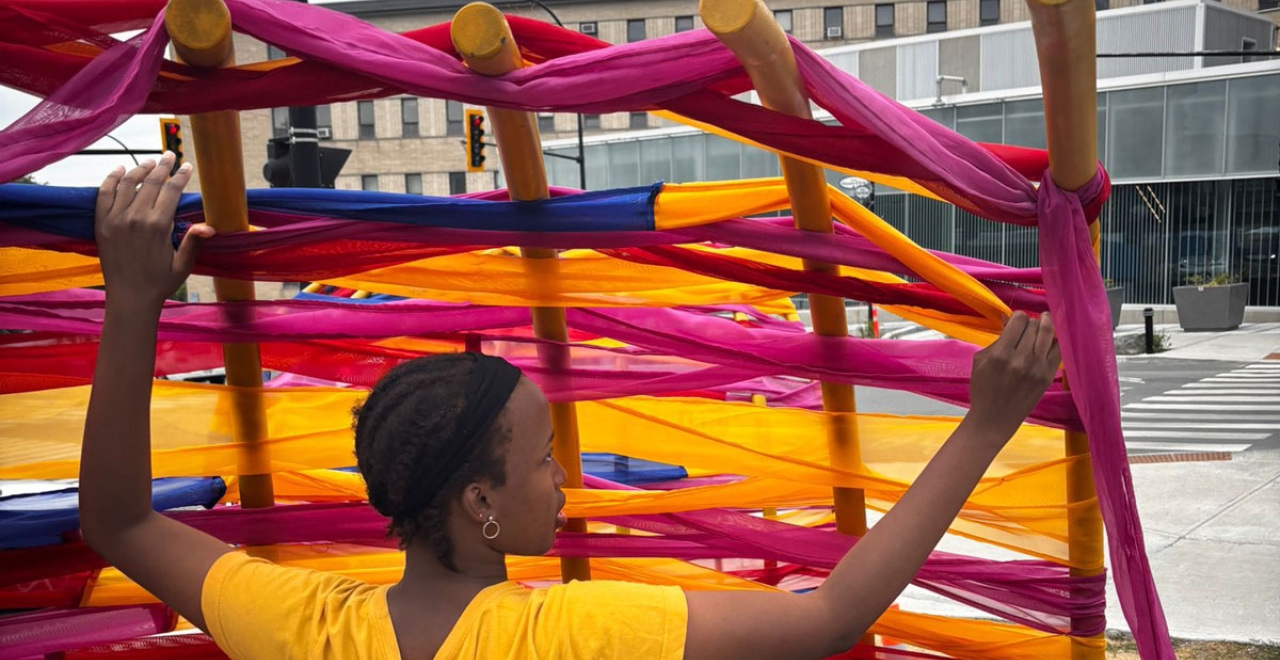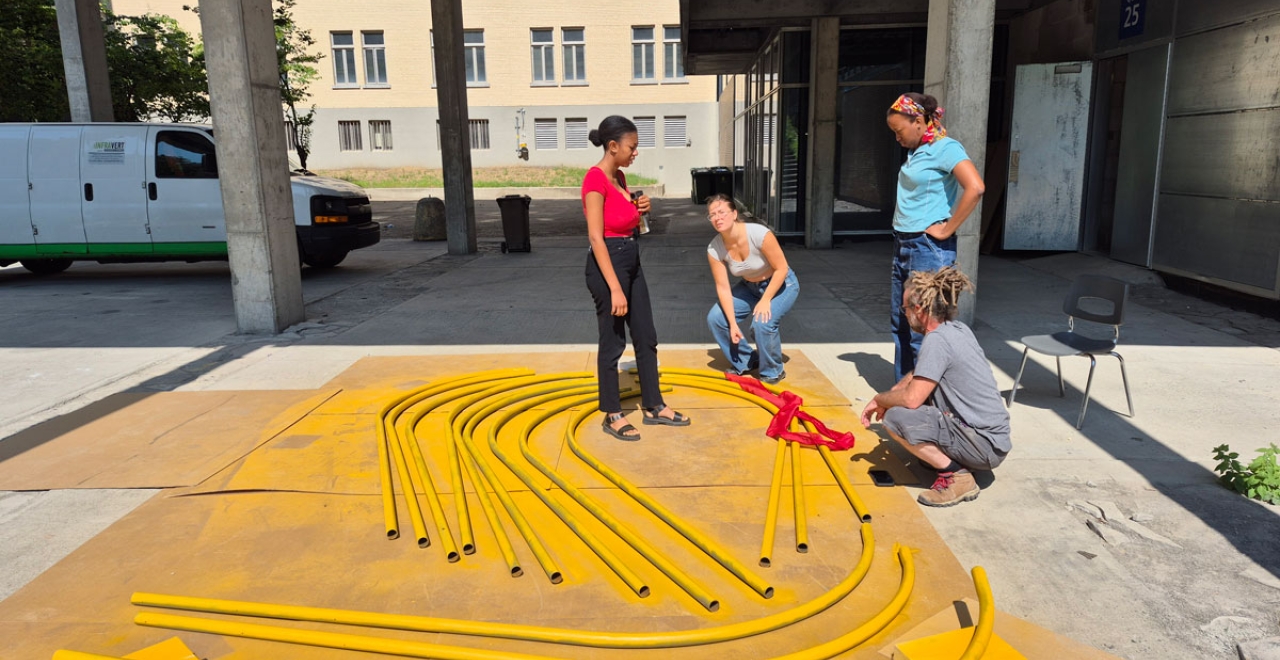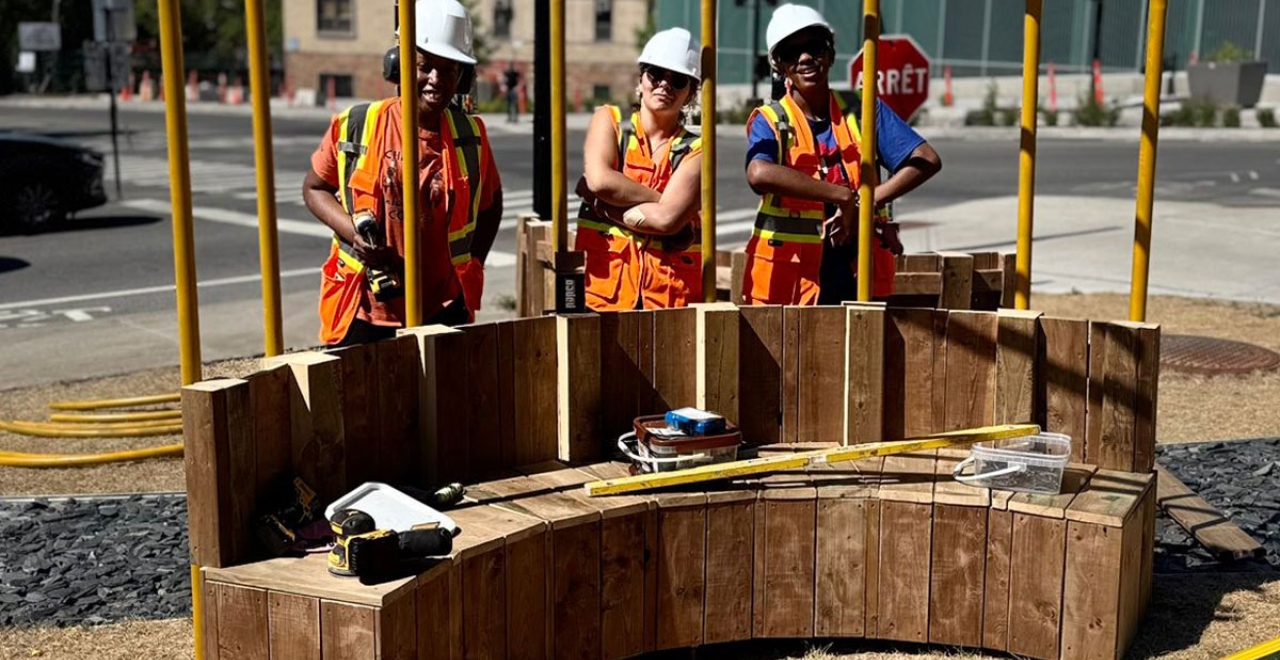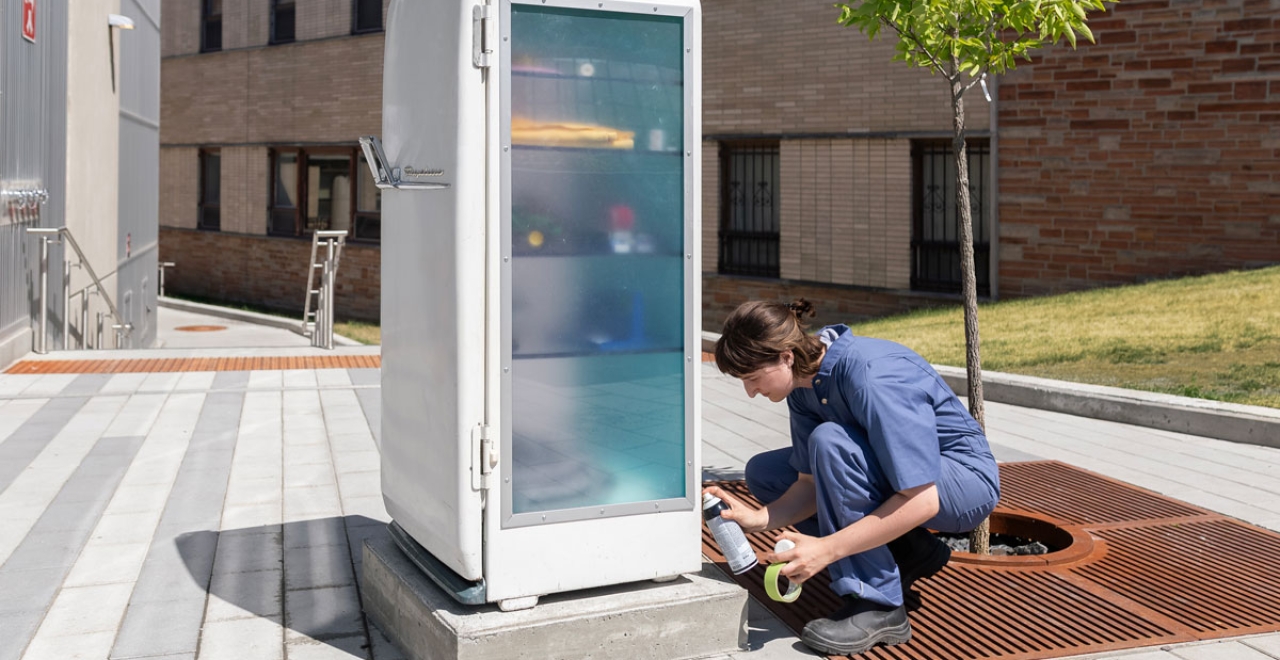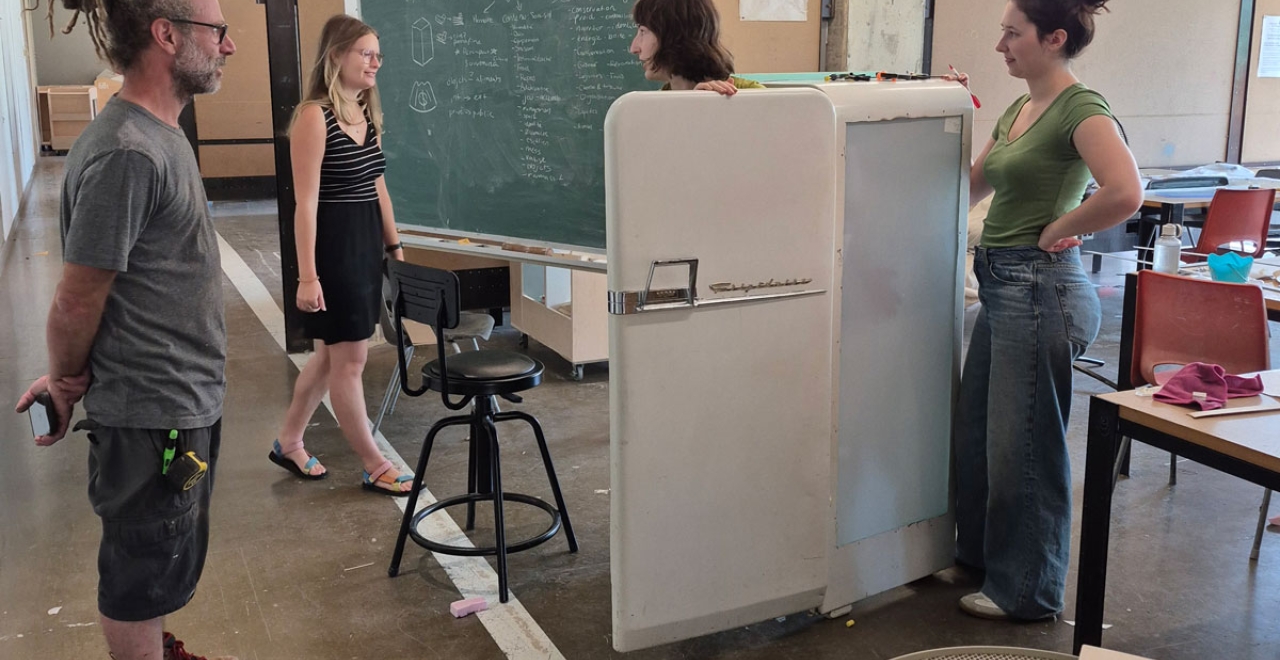Third edition: Université de Montréal
Édouard-Montpetit Station, Fall 2025
The third edition of the REM’s temporary art program was led by Université de Montréal, under the supervision of architect and visiting professor Sylvain Bilodeau of the university's Faculty of Environmental Design.
Three temporary works were created as part of a summer 2025 course entitled Activité interdisciplinaire en aménagement (Interdisciplinary Activity in Environmental Design). On this interuniversity course, students from different institutions were asked to design and create art that helps shape the identity of a mobility hub, in this case, the Édouard-Montpetit REM station.
The works
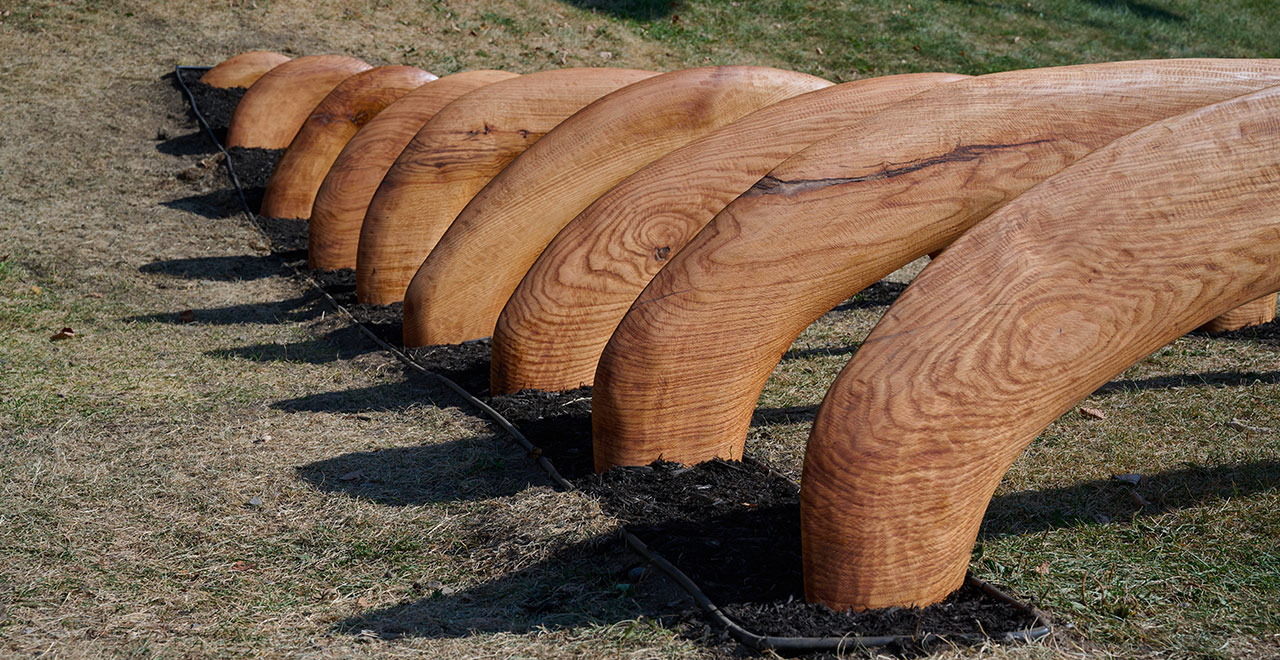 Photo credit: Charles-Étienne Lebrun
Photo credit: Charles-Étienne Lebrun
Logarythme draws inspiration from the former railway tunnel under Mount Royal, rehabilitated for the REM network to connect the Édouard-Montpetit and McGill stations. The work represents movement, time and memory in connection with the tunnel.
Carved from solid red oak, a unique species naturally found on Mount Royal, Logarythme consists of low arches and curves rising from the ground like fossilized ribs, guided by the tree’s growth rings. Each curve is a trace of life, each line a moment in time. The sculpture pays tribute to the steady rhythm of comings and goings, to unseen structures and to continuity.
The creative process as described by the artists
“Our background research drew on the urban environment of the city, its metro and tunnels and the topography of Mount Royal. These elements guided us towards organic and rhythmic forms, evoking travel, excavation, and urban relics, all at the same time.
The choice of wood was obvious. As a familiar yet meaningful material, it connects our project to the Mount Royal ecosystem. The rings can be explained by a logarithmic function and they reflect the pace of growth and the natural phenomena that have inspired us throughout the project.
The sculpture took a lot of hard, physical work. Eight blocks of oak, all worked and carved with heavy industrial tools that were not easy to handle. But far from being an obstacle, that technical challenge strengthened our connection to the material and our team spirit. We had to deal with unforeseen events, such as an arch cracking after days of work. We turned what could have been failures into learning experiences. They reminded us that accidents and the intrinsic qualities of materials can inspire creativity.”
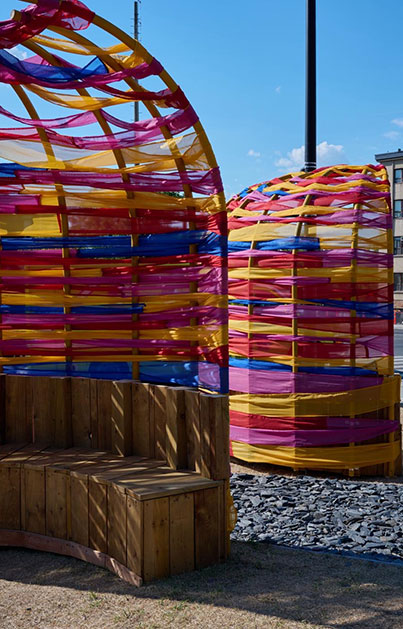 Photo credit: Kesso Yali Bah
Photo credit: Kesso Yali Bah
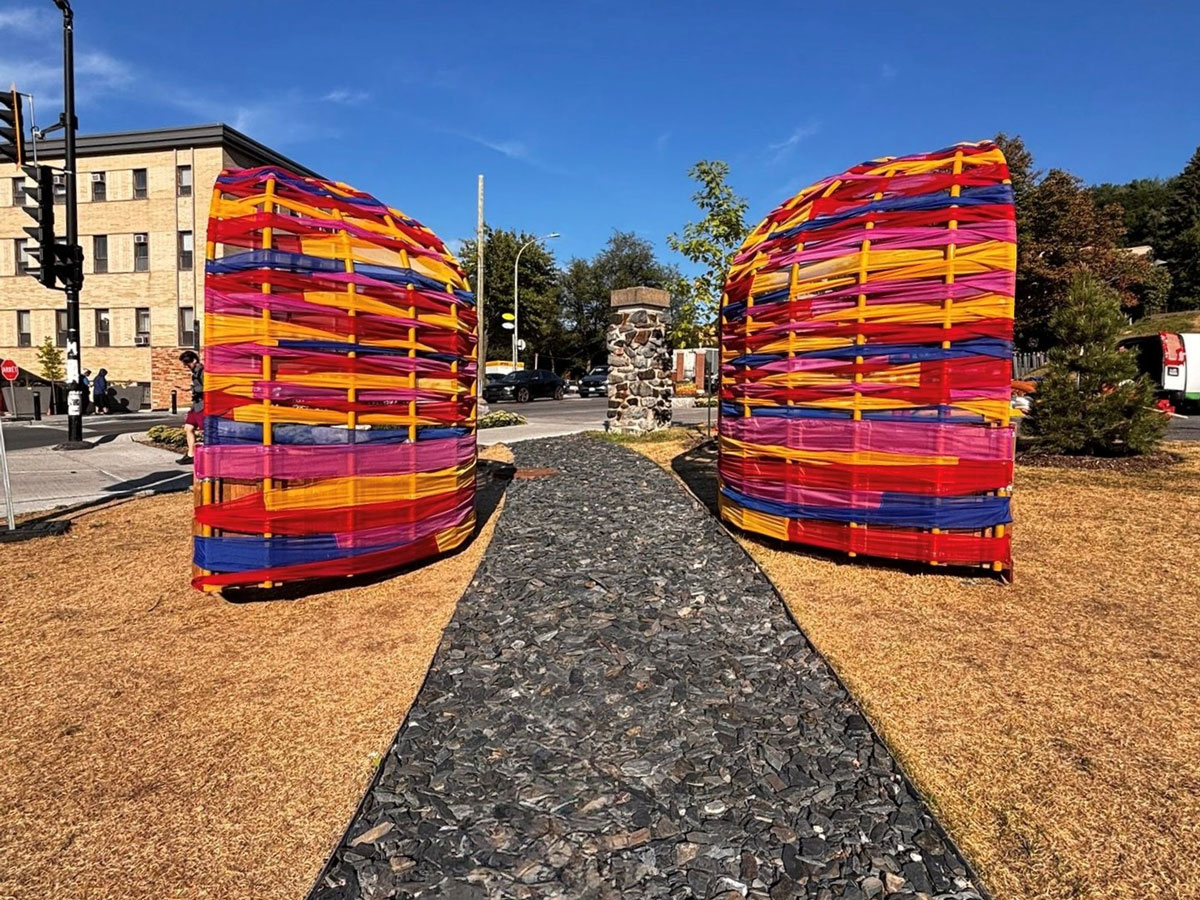
Accalmie is intended as a space for relaxation in the shade and a moment of respite from the hustle and bustle of the city. The work takes the form of two sculptural benches made of wood and steel, installed on either side of a walkway and covered by colourful fabrics.
Over the course of the day, the fabric filters the light and projects moving shadows onto the ground, forming a gentle, subtle, almost meditative ambiance. The work serves as a visual breathing space, inviting passers-by to slow down.
The walkway through Accalmie also offers a unique view of the other two works in the exhibition, triggering awareness of how all three coexist in the public space and the subtle link that binds them.
The creative process as described by the artists
“The project took shape after an initial visit to the site, where there were lots of environmental constraints: intense sunlight, a steep slope, constant wind, no space to rest. Rather than finding workarounds, we chose to turn these difficulties into strengths. The idea of a bench for passers-by was born, offering shade while allowing the wind to circulate through the fabric. We were also inspired by a desire path and decided to accentuate the curve by positioning our work on both sides, like a frame enveloping the walkway.
The work was completed in four stages. We started with the fabric component, spending a number of weeks exploring different textures and colours and ways to entwine the fabric. Next came painting, with 16 steel rods, 8 feet long, painted yellow to blend seamlessly with the surroundings. Then we moved on to sewing. We made good progress every day, and within a week, 800 square feet of fabric had been sewn. And finally, carpentry, with the manufacture of the wood seating before installation on site.
The work was designed to be easily removable, reusable and adaptable to other locations. With this approach, the project has a longer lifespan, and the materials can be repurposed beyond their first use.”
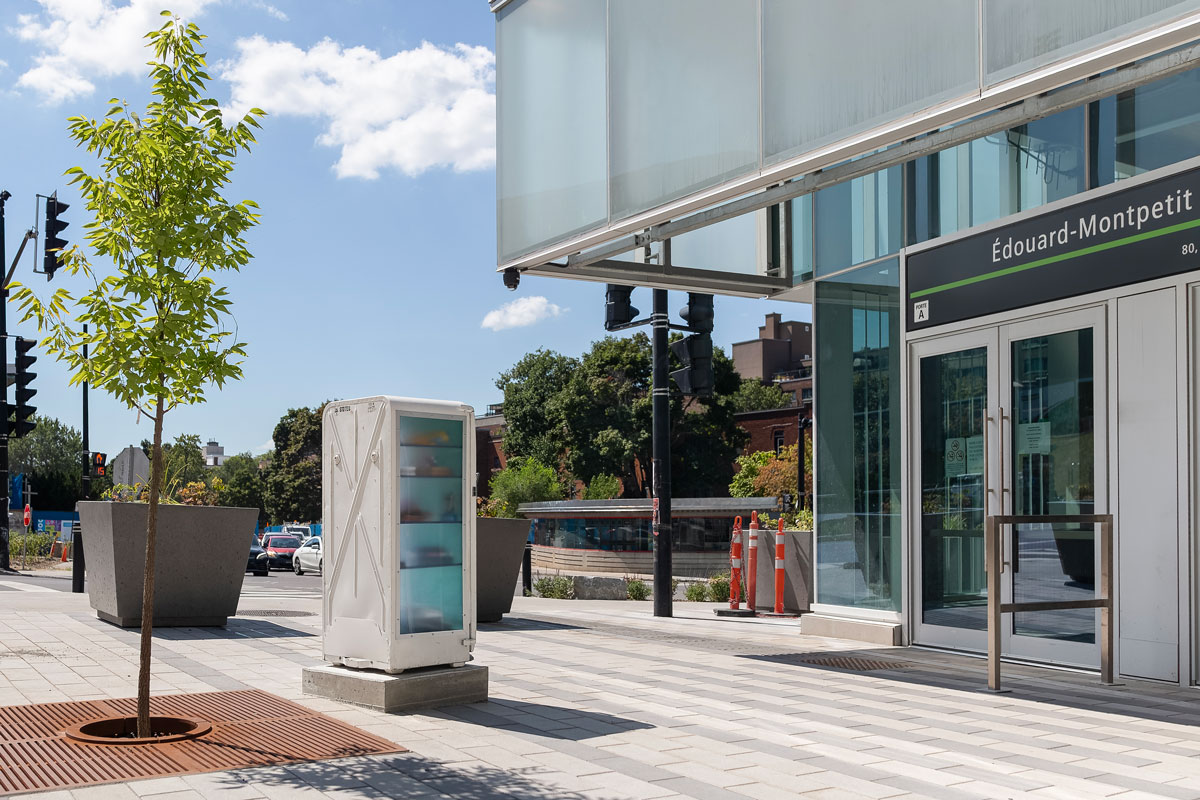 Photo credit: Luc Joo Baya
Photo credit: Luc Joo Baya
Sous-sol : une géologie humaine is about what lies underground in both a geological and architectural sense, questioning the links between land and objects.
The work is presented as a fictional artifact, something which could have been discovered during the excavation of the Édouard-Montpetit REM station, the deepest station in Canada and the second deepest in North America. An eclectic mix of everyday items is stored in a retro-style refrigerator, in full view of passers-by. Each object tells its own story, but all of them as a whole form a collective portrait of the neighbourhood. The result is part personal memory, part shared story.
The creative process as described by the artists
“As we discovered objects, we wanted to showcase them and give them their own voice. To go with our sculpture, we created trading cards with images of the objects in the refrigerator. The cards are scattered throughout the neighbourhood and allow people to come across our objects in a whole new way. Throughout our process, the ordinary has become special, which is why these cards are meant to be moved around and traded. Our main intention is to shine a light on the community that is central to our project.”

